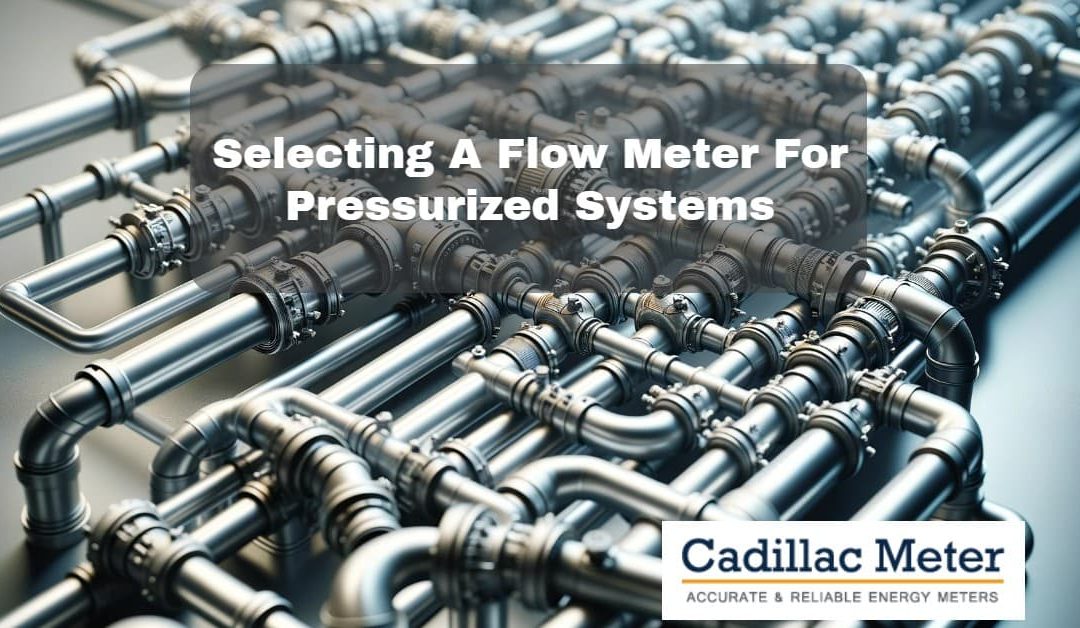It’s easy to choose the wrong flow meter. There are many different meter technologies on the market today, all with their own strengths and weaknesses. These variations in functionality and performance are very important to consider when selecting the most appropriate measurement device for your system. The level of accuracy and performance that operators prefer is only attainable by choosing the best meter for the system, however, there is no absolute solution– especially since there are often unknowns leaving room for error. We want to make sure that the right flow meter is installed for your pressurized system, so we’ve put together some key considerations for your selection.
-
Know your system’s operating range of flow. This is the lowest flow rate to the highest flow rate that your system operates within. For example, at times you may only need to pump 10 gallons per minute, and other times you may need as much as 100 gallons per minute. A wider operating range may eliminate certain meters types because some measurement technologies would not have the adequate turndown capability.
-
Pipe size is very important. Many systems have large pipes and small flows, leaving out most flow meters of reasonable cost. In this case, a pipe of smaller diameter should be installed and the meter should be placed in this section in order to measure small flows. Attention to low flow accuracy is critical in the selection process.
-
Make sure there is enough straight run up and downstream of the meter. Not all meters have the same straight run requirements. The length of piping called for is generally a function of the diameter of the pipe. For example, a vortex flow meter may need ten times the diameter of the pipe in upstream straight run, and five times the diameter in downstream straight run. If you have a two-inch pipe you’d need 20 inches of straight piping before the meter and 10 inches after it. If you don’t have the length of straight pipe you need, especially before the meter, then straightening vanes should be incorporated, or the system should be redesigned near the outlet of the pump to install the meter as directed.
-
All flow meters must be periodically inspected as part of a scheduled maintenance program, especially if the meter has moving parts. In general, meters are inspected for two reasons: to make sure that it is still working properly or to confirm its accuracy. The accuracy should remain within prescribed limits, which are usually +/-5% of the flow rate or mass flow reading. Most devices are calibrated by their manufacturer and operate well within ±5%. Flow meters with moving parts will require routine internal inspections for deposits and degradation, especially if the fluid contains particulates. Installing a filter ahead of these devices can help minimize fouling. Meters lacking moving parts, such as ultrasonic or electromagnetic flow meters, sometimes develop issues with the electronic components of their secondary element. These pressure sensors should be periodically removed and inspected. Applications where calcium or iron coatings may occur can create potential problems. The operation of magnetic flowmeters may be hindered if such a coating insulates the electrodes from the liquid flow, in which case periodic cleaning would be necessary.
-
All flowmeters require an initial calibration. Most manufacturers will calibrate a meter under the end-user’s specific service conditions. Re-calibrating the meter is usually necessary after a certain amount of time and use, depending on the meter technology and how well it fits the application. Some liquids passing through can be be abrasive, erosive, or corrosive, deteriorating the device enough to affect its performance. Some flow meters are more susceptible to this kind of damage than others. For instance, wear of turbine blades is known to cause performance changes. In some cases, calibration may not be necessary for many years because nothing has occurred that could change the meter’s performance.
-
Improvements to flow meter technology should also be considered. It can be regrettable to choose a meter that is simply the most popular for your type of application, and assume that it will still the best instrument for the job in years to come. Numerous changes and innovations have occurred in recent years in the development of flowmeters, making your options continuously broader.
For more specific advice about how to choose the best flow meter for your system, contact Cadillac Meter today at 503-624-6331



